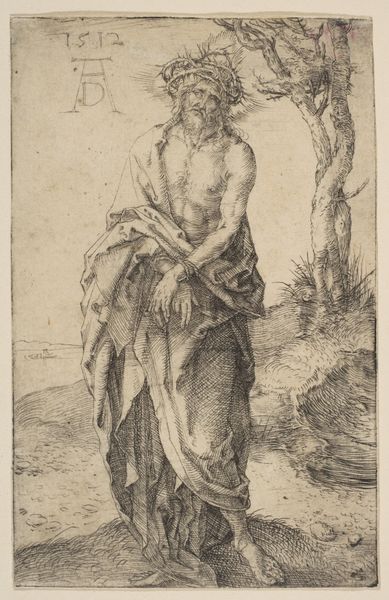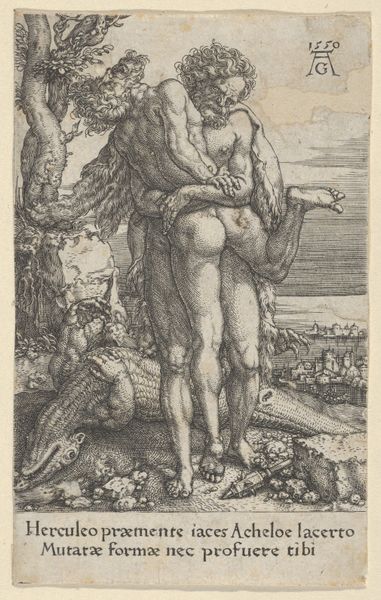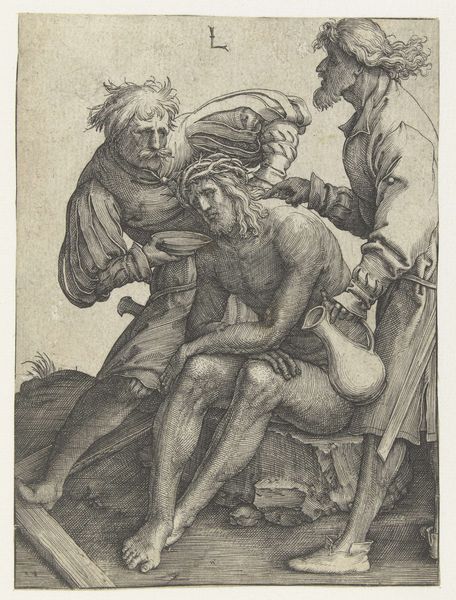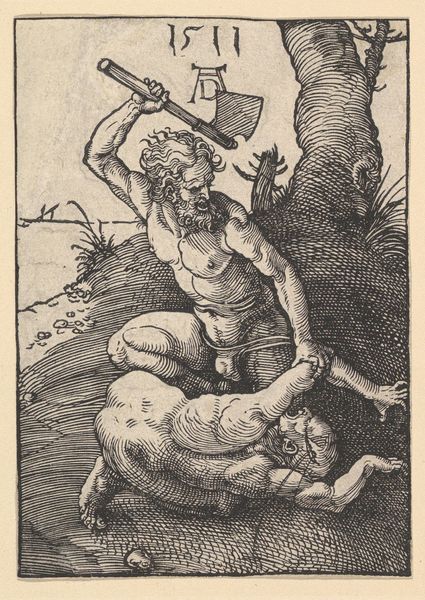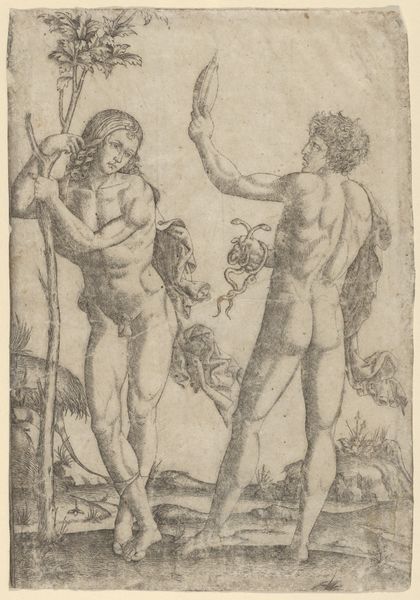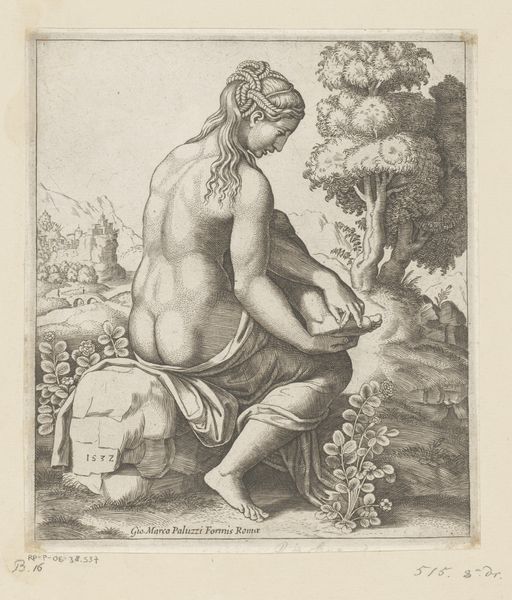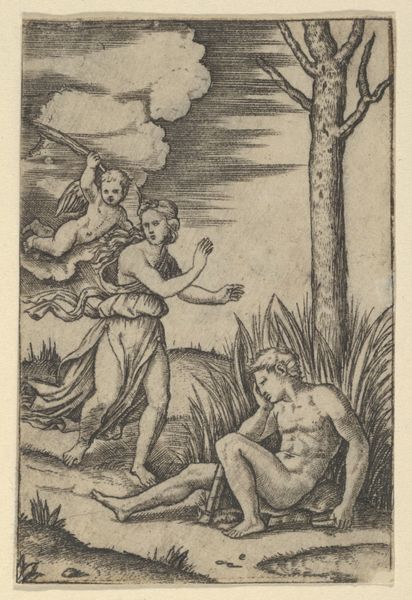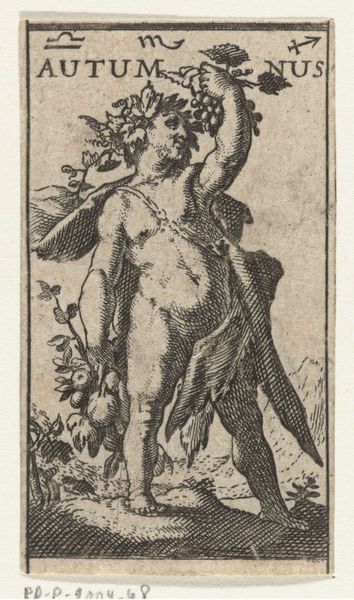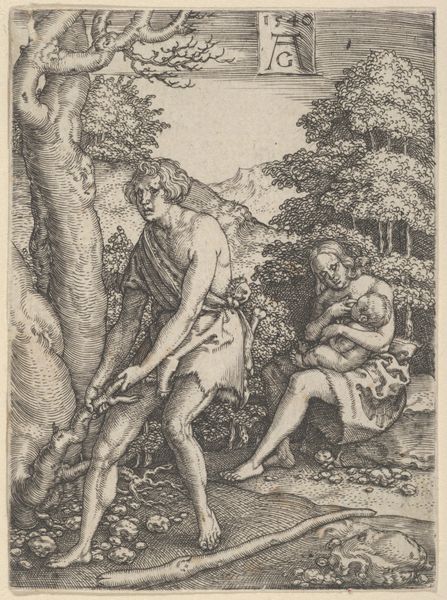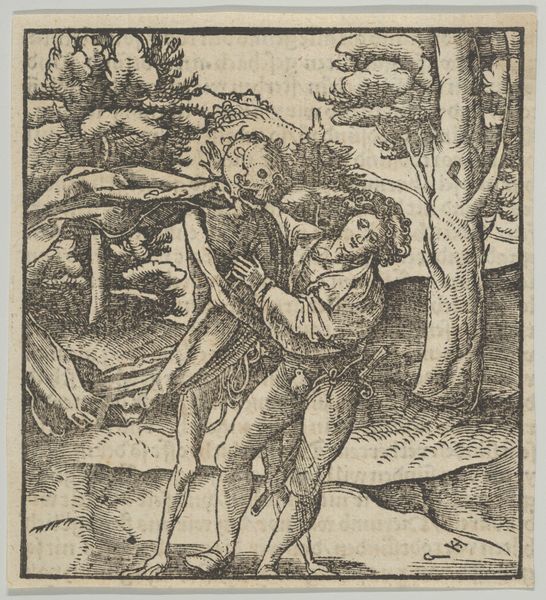
The seated naked man at left being beaten with a fox's tail 1505 - 1515
0:00
0:00
drawing, print, engraving
#
pencil drawn
#
drawing
#
narrative-art
# print
#
figuration
#
history-painting
#
academic-art
#
italian-renaissance
#
nude
#
engraving
#
male-nude
Dimensions: Sheet: 4 1/2 × 3 1/8 in. (11.5 × 7.9 cm)
Copyright: Public Domain
Curator: Right now, we are standing in front of Marcantonio Raimondi's "The seated naked man at left being beaten with a fox's tail," created sometime between 1505 and 1515. It’s an engraving, part of the Met's collection. What strikes you about it? Editor: It feels almost ritualistic, this stark scene. The desaturated rendering intensifies this feeling. I am intrigued and unnerved. Curator: Raimondi was a master printmaker, closely associated with Raphael. While he's known for his interpretations of other artists’ designs, this composition feels uniquely unsettling. What symbols catch your eye? Editor: Well, the fox tail is peculiar and potent! In some cultures, foxes signify cunning and deception, but the tail specifically? It brings to mind ideas of primitive justice or purification, as if the naked man is being cleansed of something—perhaps a hidden vice. It really pulls you into thinking about judgment and shame in the 16th century. Curator: The fox tail might refer to specific stories popular at that time, although the source remains elusive to scholars, leaving the tale up to us to determine the moral story we would imagine. I'm really intrigued by how both figures are so…exposed, literally and metaphorically. What does it say about vulnerability and power? Editor: It brings up interesting tensions, right? One man stands powerful with the instrument of supposed correction in hand, and the other shrunken and hunched under shame and judgement, which can easily make a situation such as this ripe for abuse. You almost wonder what crime merits this…unpleasant approach to justice? Curator: The man holding the tail, with his classical physique and confident stance, embodies a certain ideal of strength, perhaps wisdom even. This kind of reference can be found from antique classical images. The subject being punished—his despondency suggests profound guilt or suffering. Perhaps, this could symbolize not only individual sin but human imperfection on a more collective level, reflecting an endless search for ideals. Editor: Interesting. This has sparked something about accountability in society; the way those in authority apply punishments, or corrections, is forever evolving, but in no instance can a perfect application of what's best be truly accomplished. Even now. Sobering to imagine just how relative those ideals still remain.
Comments
No comments
Be the first to comment and join the conversation on the ultimate creative platform.
